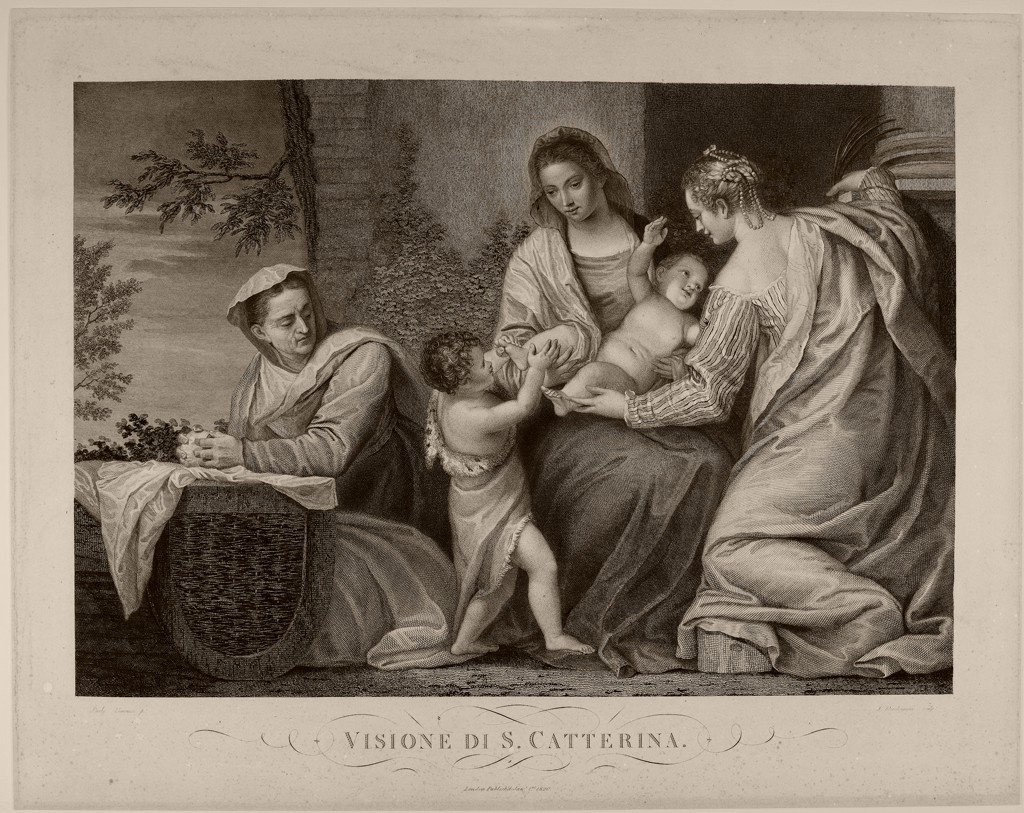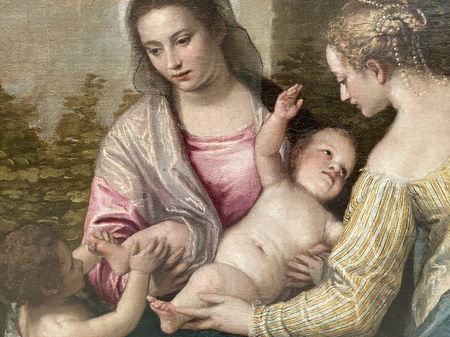Work of the Week #12
Giovanni Vendramini, Vision of Saint Catherine, 1820 (Harvard University Art Museums)

The most recent comprehensive catalogue of the Timken’s permanent collection appeared almost a quarter-century ago, in 1996. That publication was the professional capstone of Nancy Ames Petersen’s career as director of the Timken, a role she performed from 1980 up until that year. I have been thinking about Nancy because she passed away peacefully last week. Everyone who cares about this institution owes her a debt of gratitude. Nancy was a decisive, impactful leader at a time when very few art museums were led by women. She was an ardent supporter of art historical research. I feel honored to have known and worked with her.
One goal for the “Work of the Week” series has been to reflect on the permanent collection in advance of writing a new handbook for this museum. Due to Nancy’s ingenuity, a significant number of Timken’s artworks were made the focus of internally-generated exhibitions, or else, because of the generous loans she enabled, they appeared prominently in the research of renowned curators throughout the world. For this reason, I have chosen as “works of the week” the objects that we still don’t know well enough.
An example might be our work by the Italian artist Paolo Caliari, better known to the art historical community as Veronese. Although he was born in Verona, as his nickname suggests, Veronese is best remembered for the grand-scale, theatrical frescoes and flattering portraits of nobility that he painted in Venice during the late 16th century. His easel pictures of biblical and mythological subjects have been celebrated by numerous exhibitions, most recently at New York’s Frick Collection (2006), Sarasota’s Ringling Museum (2013), and London’s National Gallery (2014).
The Timken’s devotional painting by Veronese had been previously known as Madonna and Child with St. Elizabeth, the Infant St. John the Baptist, and St. Justina. While its subject matter is a familiar one in Renaissance art--Italian artists from Raphael to Bronzino produced images of the Holy Family--the scholars involved with the Veronese exhibition held at Ringling Museum argued that the painting had been misidentified at the time of its acquisition. Indeed, the female figure at right was previously thought to be St. Justina, a somewhat obscure 5th-century saint from Padua, while their research suggested that this was, in fact, a representation of St. Catherine. A later engraving of the San Diego picture also identifies this figure as St. Catherine.
This is just to say there is always new work to be done when studying great paintings in our collection. That is, after all, the pleasure of art historical research. As we seek to understand this image more fully, it is worth keeping in mind the impressive women who brought it to San Diego. Amy and Anne Putnam, first and foremost, deserve to be credited, but also Nancy Petersen, who established high standards of interpretation that will guide our future efforts.
